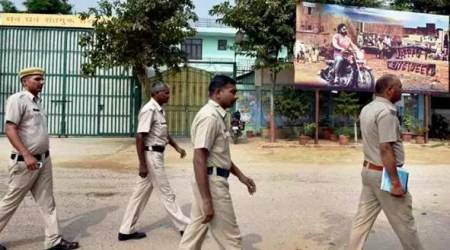 Exhibits from the show (Photo: Praveen Khanna)
Exhibits from the show (Photo: Praveen Khanna)
Just like an Indian bride, traditionally, a bride in Serbia would bring to her new home a rich trousseau, comprising garments made of handwoven fabric. Besides, the bridal outfit was also embellished with jewels and a luxurious headgear. In the 19th and early 20th centuries, when this practice was prevalent in the small southeast European country, these signified the family’s economic and social status.
Some of these items from Serbia — textiles, jewellery and headgear — are on display at Delhi’s National Museum, as part of an ethnographic exhibition organised by the museum in conjunction with the Ethnographic Museum, Belgrade. The exhibition, titled “Textiles and Decoration in the Culture of the Serbs in the 19th and the First Half of the 20th Centuries”, is curated by Mirjana Menkovic, director, and Marina Cvetkovic, curator, Ethnographic Museum, along with Anju Sachdeva, curator, and Abira Bhattacharya, co-curator, from the National Museum.
“This exhibition represents the ethnographic cultural heritage of Serbia and the Balkans and their multi-layered cultural identities through textiles, ornaments and colour schemes,” says Menkovic, adding that as many as 95 objects have been brought to India from the Ethnographic Museum, which houses over 50,000 ethnographic items, mostly produced in the 19th and 20th centuries.
The items on display have mostly been produced by anonymous craftspeople. In the textile section, the items include objects used indoors: blankets, rugs, towels, curtains, straw mats, cradle covers, wall hangings and bed cloth. There are also folk costumes, both casual and ceremonial, woven by the community, and specimens of embroidery and knitting techniques, such as socks, foot warmers and mittens.
 Exhibits from the show (Photo: Praveen Khanna)
Exhibits from the show (Photo: Praveen Khanna)
A separate section is devoted to jewellery, with diverse head dresses, neck and chest ornaments. “These items have accumulated multiple cultural meanings and testify to both private lives of individuals and families and the life of the communities within which they were produced. The diverse symbols featuring on the displayed artefacts are indicative of a broader narrative about Serbian culture,” adds Merkovic.
The exhibition is on till August 31

